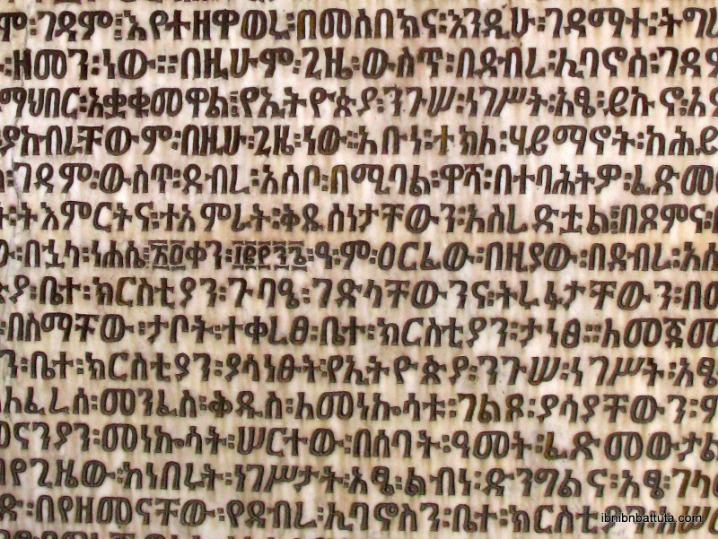Overview of the Ethiopian Alphabet
The Ethiopian alphabet, also known as Ge’ez script, is an ancient writing system used primarily for the Amharic, Tigrinya, and Ge’ez languages. It is a unique script characterized by its syllabic structure, where each character represents a consonant-vowel combination. The script has a distinctive appearance with its rounded and complex characters, reflecting its historical origins. The Ethiopian alphabet comprises several hundred characters, systematically arranged to account for various sounds. It has played a vital role in preserving Ethiopia’s cultural and literary heritage, with inscriptions dating back thousands of years. Today, the script continues to be used in everyday communication, religious texts, and official documents across Ethiopia. Its rich history and continuing relevance make it a fascinating subject of study in the realm of writing systems worldwide.
Structure of the Ge’ez Script
The Ge’ez script, also known as Ethiopic, is an ancient and unique writing system used for several languages in Ethiopia, including Amharic, Tigrinya, and Ge’ez. It features a distinctive set of characters that are primarily consonant-based, with each symbol representing a consonant-vowel combination. The script’s structure is highly systematic, with characters modifying their shape to indicate different vowels, creating a visually cohesive and expressive alphabet that has played a vital role in Ethiopia’s linguistic and cultural history.
Consonant and Vowel Combinations
The Ge’ez script, also known as Ethiopic, is an ancient writing system used primarily for languages such as Amharic, Tigrinya, and others in Ethiopia. It consists of a series of characters that represent consonant sounds combined with different vowels. Each base consonant has a set of modified forms that indicate the vowel accompanying it, making the script a syllabary rather than an alphabet. In this system, the consonant is written first, and the vowel sound is marked through additional modifications to the character. These combinations create a unique set of symbols that represent both consonant-vowel sounds, enabling a compact and efficient way to write phonetic syllables of the language. The structure of the Ge’ez script reflects a systematic approach to representing speech sounds, with each consonant root having multiple forms for the different vowels that modify how the consonant is pronounced. This combination of consonants and vowels within a single character set contributes to the script’s distinctive visual appearance and phonetic precision.
Basic Characters and Their Variants
The Ge’ez script, also known as Ethiopic, is an ancient script used for several languages in Ethiopia and Eritrea. It consists of a series of basic characters that represent consonant-vowel combinations, making it an abugida rather than a pure alphabet. The script’s structure is organized into a set of root characters, each corresponding to a consonant, with different vowel sounds indicated by diacritical modifications or added forms. These characters are derived from a common source and are systematically modified to produce related variants for different vowel sounds.
The basic characters in the Ge’ez script include consonant forms that serve as the foundation. For instance, there are around 26 fundamental consonant characters, such as ሀ (ha), ለ (la), መ (ma), ሠ (sha), ቀ (ka), ገ (ga), and so on. Each of these consonant characters has several variants, typically seven, representing the different vowel sounds: ä, u, i, a, e, əs, and ɨ. The variations are created by adding specific marks or changing the shape of the base character, resulting in a set of derived forms. For example, the character ሀ (ha) can be modified to ሁ (hu), ሂ (hi), ሃ (ha, with a different vowel sound), ሄ (he), ህ (hə), and ሆ (ho).
This systematic approach allows for a compact and efficient representation of syllables, which is a distinctive feature of the Ge’ez script. The characters are highly stylized and have evolved over centuries, but the core structure remains consistent, facilitating reading and writing in the languages that use this script, including Amharic, Tigrinya, and Ge’ez itself. Understanding the basic characters and their variants is essential for mastering the script and appreciating the rich linguistic history of Ethiopia.
Letter Modifications and Diacritics
The Ge’ez script, also known as Ethiopic, is a unique writing system used for several languages in Ethiopia, including Amharic, Tigrinya, and Ge’ez. It is an abugida, meaning each character traditionally represents a consonant with an inherent vowel sound, which can be modified to indicate different vowels. The script’s structure consists of a set of base characters for consonants, with variations that reflect different vowel sounds.
Letter modifications in the Ge’ez script are achieved by changing the shape of the base consonant character. These modifications often involve alterations to the character’s form to denote different vowels, such as adding diacritical marks or changing the overall shape. Each consonant has a series of forms corresponding to the vowels a, u, i, e, and o, creating a systematic set of syllabic characters.
Diacritics in the Ge’ez script are primarily used to modify the vowel sound associated with a consonant. While the core characters inherently include vowel sounds, diacritics can be added to indicate other vowel qualities or to provide further phonetic detail. These diacrities are usually small marks placed above or below the base character, helping to distinguish similar-sounding syllables and ensuring accurate pronunciation in written language.
Historical Development
The alphabet of Ethiopia, also known as Ge’ez script, has a rich and ancient history that reflects the cultural and religious heritage of the region. Evolving over centuries, it has played a vital role in the development of Ethiopian literature, religion, and identity. Understanding its historical development offers valuable insights into the unique linguistic and scriptural traditions of Ethiopia.
Origins of the Script
The alphabet of Ethiopia, also known as the Ge’ez script or Ethiopic script, has a rich historical development rooted in ancient times. It is believed to have originated around the 4th century CE, evolving from the South Arabian script used by traders and settlers in the region. The script was initially employed for inscribing religious texts, particularly in the Ge’ez language, which was the liturgical language of Ethiopian Orthodox Christianity. Over centuries, it adapted and expanded to accommodate multiple languages spoken across Ethiopia and Eritrea. The script is distinctive for its system of syllabic characters, each representing a consonant-vowel combination, making it one of the oldest alphabets still in use today. Its development reflects the cultural and religious history of Ethiopia, serving as a vital link between its ancient civilizations and modern days.
Influences and Evolution
The alphabet of Ethiopia, also known as Ge’ez script or Ethiopic script, has a rich historical development influenced by various ancient civilizations. Originally developed around the 5th century AD, it has evolved from the ancient Ge’ez language, which was used for religious and administrative purposes. The script’s origins are believed to be linked to the South Arabian scripts, adapting and transforming as it spread across Ethiopia and Eritrea. Over centuries, the script has undergone significant modifications, resulting in a unique system that incorporates consonant and vowel combinations into a single character. Its development was heavily shaped by the spread of Christianity in Ethiopia, making it a vital part of Ethiopian cultural and religious identity. Today, the Ethiopic script continues to evolve, maintaining its role in Ethiopia’s literary and cultural traditions while adapting to modern technological requirements. Its influences can be seen in various languages and dialects spoken throughout the region, reflecting a continuous process of linguistic and scriptural evolution through centuries of cultural exchange and adaptation.
Modern Adaptations

The alphabet of Ethiopia, known as Ge’ez or Ethiopic script, has a rich historical development and has undergone several modern adaptations over time. Traditionally, it was used to write the ancient Ge’ez language, which remains a liturgical language of the Ethiopian Orthodox Church. Throughout centuries, this script has evolved from its origins to become adaptable for various languages within Ethiopia, including Amharic, Tigrinya, and others.
- Historically, the Ge’ez script traces back to as early as the 5th century AD, with origins linked to South Arabian scripts. It was initially used mainly for religious texts and inscriptions.
- In the medieval period, the script expanded in usage and complexity, adapting to different linguistic needs and developing unique characters for each language.
- During the 20th century, various efforts were made to modernize the script to facilitate printing and digital communication, leading to the creation of Unicode standards for Ethiopian scripts.
- Modern adaptations include the standardization of characters for use in computers, enabling the digital representation of Ethiopian languages.
- Innovations have also incorporated the development of fonts, keyboard layouts, and language input methods, making the script accessible and functional in contemporary digital environments.
- Contemporary efforts focus on preserving the traditional aspects of the script while ensuring its usability across education, technology, and literature sectors in Ethiopia.
Components of the Ethiopian Alphabet
The Ethiopian alphabet, also known as Ge’ez script, is a unique and ancient writing system used to write several languages in Ethiopia. It consists of a series of consonant-vowel combinations, each represented by a distinct character or symbol. These components form the foundation of the script, enabling the accurate transcription of the diverse languages spoken in the region. Understanding the components of the Ethiopian alphabet is essential for appreciating its rich cultural and linguistic heritage.
Gā’ēz and Fidel Scripts
The alphabet of Ethiopia is a complex and rich writing system that includes the components of the Gā’ēz script and the Fidel script, which are integral to Ethiopian literacy and cultural heritage. The Ethiopian Alphabet is primarily based on the Gā’ēz script, an ancient script used historically for writing the liturgical language of the Ethiopian Orthodox Church, as well as other languages of Ethiopia. The script is unique because it is an abugida, where each character represents a consonant with an inherent vowel sound, which can be modified with diacritics to change the vowel.
The Fidel script, also known as the Ethiopian Fidel, is a modern adaptation of the traditional Gā’ēz script used in contemporary Ethiopian languages like Amharic, Tigrinya, and others. It consists of a set of symbols that correspond to consonant-vowel syllables, organized systematically to provide a phonetic representation of the language. The Fidel script is popular in Ethiopia today due to its simplified and standardized form, making it accessible for everyday use in printing, education, and communication.
Overall, the Ethiopian alphabet, through its components of Gā’ēz and Fidel scripts, continues to serve as a vital part of Ethiopia’s linguistic and cultural identity, blending ancient traditions with modern adaptations to preserve its rich history while supporting contemporary language use.
Traditional Consonants
The Ethiopian alphabet, also known as Ge’ez script, consists of several components that form the foundation of the language. One of the key parts is the traditional consonants, which are fundamental in constructing words and sentences. These consonants are unique in their phonetic qualities and play a significant role in the structure of Ethiopian languages such as Amharic and Tigrinya. Each consonant in the script has multiple forms that represent different vowel sounds, making the alphabet both intricate and expressive. Understanding these traditional consonants is essential for mastering the pronunciation and writing system of the Ethiopian alphabet.
Vowel Indicators
The Ethiopian alphabet, also known as Ge’ez script, is a unique system used primarily for languages such as Amharic, Tigrinya, and others. A key feature of this script is its use of components and vowel indicators that modify the base consonant characters. These components allow for the representation of different sounds within the language, making the script both versatile and complex.
- Base Consonant Characters: The foundation of the Ethiopian alphabet consists of consonant shapes that form the core of each letter.
- Vowel Indicators: Special marks or modifications added to the base consonant to indicate different vowel sounds. These are essential for pronunciation and meaning.
- Modified Consonant Forms: Each consonant has multiple forms depending on the vowel indicator attached, totaling around 30 variants per consonant.
- Combination Components: Sometimes, multiple markers or modifications are combined to produce specific sounds or phonetic nuances.
- Numeral and Additional Symbols: Apart from letters and vowels, the script also includes symbols for numbers and other linguistic notations.
Phonetics and Pronunciation
Phonetics and pronunciation play a crucial role in understanding and speaking the English language accurately. They focus on how sounds are produced, transmitted, and received, helping learners improve their clarity and comprehension. While this article explores the alphabet of Ethiopia, understanding phonetics can also enhance pronunciation skills when learning about different languages and their scripts.
Sound Values of Consonants

The alphabet of Ethiopia, known as Ge’ez or Ethiopic, incorporates a unique set of consonants and vowels that reflect the phonetic characteristics of the language. In phonetics and pronunciation, consonants in the Ethiopian script have distinct sound values that are integral to accurate communication. These consonants can be categorized based on their place of articulation, such as labial, dental, alveolar, palatal, velar, and glottal sounds, each producing specific sound values within the language. For example, the letter አ (an) corresponds to a glottal stop or a low vowel sound, while በ (be) has a voiced bilabial plosive. The pronunciation of these consonants can vary subtly depending on their word placement and surrounding vowels, but each maintains a consistent sound value that is essential for the clarity of spoken and written communication. Understanding the sound values of Ethiopian consonants is crucial for language learners and linguists to grasp the phonetic richness and accuracy needed in using the script correctly.
Vowel Sounds and Variants
The alphabet of Ethiopia, known as Ge’ez or Ethiopic script, is primarily used for languages such as Amharic, Tigrinya, and others. When examining phonetics and pronunciation within this script, it is important to understand how vowel sounds and their variants are represented. In English, vowel sounds can vary significantly, and similar variability exists in Ethiopian languages, though they use a distinct script and phonetic system. English vowel sounds include short vowels like /a/ as in “cat,” /e/ as in “bed,” /i/ as in “sit,” /o/ as in “hot,” and /u/ as in “cup,” along with their long and diphthong variants. These variants are not only crucial for correct pronunciation but also for meaning differentiation. Understanding these vowel sounds and their variants helps in mastering pronunciation and improves language comprehension in both English and Ethiopian languages using the Ge’ez script. The phonetic diversity emphasizes the importance of precise articulation and the role of vowels in conveying meaning across different languages and scripts.
Pronunciation Rules
The alphabet of Ethiopia, known as Fidel, is a unique script used to write several languages including Amharic, Tigrinya, and Ge’ez. Understanding the phonetics and pronunciation rules of this script is essential for proper reading and speaking. Although it differs significantly from the Latin alphabet, the principles of phonetics and pronunciation still play a key role in mastering its sound system.
- Each character in the Ethiopian Fidel represents a specific consonant-vowel combination, with modifications to indicate different vowels.
- The basic form of a consonant is modified depending on the accompanying vowel, which results in a series of related characters.
- Pronunciation rules involve understanding the vocalic variations and how they affect the consonant sound, e.g., ሀ (ha), ሁ (hu), ሂ (hi), ሃ (ha), ሄ (he), ህ (h), ሆ (ho).
- Stress and tone are generally not phonemic in Ethiopian languages, but clear enunciation of vowels enhances intelligibility.
- The vowel sounds in Ethiopian languages are generally consistent and predictable, aiding in pronunciation learning.
- When reading Fidel, recognizing the pattern of consonant modifications is crucial for accurate pronunciation.
- Practicing pronunciation with native speakers or listening to recordings can improve fluency.
Usage and Applications
The alphabet of Ethiopia, also known as Ge’ez or Fidel script, plays a vital role in both everyday communication and cultural preservation. Its unique structure and extensive character set reflect the rich linguistic heritage of the country. This script is used not only in official documentation and modern writing but also in religious texts, literature, and education, showcasing its versatile application across various domains of Ethiopian life.
In Religious Texts
The alphabet of Ethiopia, also known as Ge’ez script or Fidel, holds significant importance in religious texts and practices within Ethiopian Orthodox Christianity, Ethiopian Catholicism, and other religious communities. Its unique structure and phonetic qualities have made it an essential tool for preserving and transmitting sacred writings across generations.
- Transcribing Sacred Scriptures: The Ge’ez script is used to write religious texts such as the Bible, hymns, and liturgical prayers, ensuring their accurate transmission and preservation.
- Liturgical Readings: The alphabet facilitates the reading of religious ceremonies, allowing clergy to perform rituals and recitations in a language that is both sacred and accessible to the worshippers.
- Educational Purposes: Religious schools and seminaries utilize the script to teach students about doctrinal texts, religious history, and spiritual practices.
- Ceremonial Chanting: The script is integral for chanting and singing during religious services, helping to maintain the musical and poetic traditions of Ethiopian Christianity.
- Preservation of Cultural Identity: The use of the Ge’ez alphabet in religious contexts strengthens cultural and spiritual identity among Ethiopian believers, linking them to their religious heritage.
In Literature and Education
The alphabet of Ethiopia, also known as Ge’ez or Fidel script, plays a crucial role in both literature and education within the country. Its unique structure and rich history make it an important cultural asset that supports the dissemination of knowledge and cultural identity.
In literature, the Ethiopian alphabet is used to write a vast array of texts, including religious scriptures, historical documents, poetry, and contemporary literature. It preserves the linguistic heritage of various languages spoken in Ethiopia, such as Amharic, Tigrinya, and Ge’ez, enabling the preservation and continued appreciation of Ethiopia’s diverse literary traditions.
In education, the alphabet serves as the foundation for teaching reading and writing to children and learners of all ages. Its standardized form facilitates literacy development and helps in the dissemination of educational materials across the country. Moreover, the use of the native script in textbooks and official documents promotes national identity and linguistic pride.
- Supporting the preservation of Ethiopia’s cultural and linguistic heritage.
- Enabling the production and dissemination of literature in native languages.
- Serving as the basis for literacy education at all levels.
- Promoting cultural pride and national identity through language preservation.
Digital and Modern Communication
The alphabet of Ethiopia, known as the Ge’ez script or Fidel, plays a vital role in both traditional and modern communication within the country. Its usage extends from religious texts and historical manuscripts to contemporary digital platforms, reflecting Ethiopia’s rich cultural heritage and evolving communication needs.
- Preservation of religious and historical texts through handwritten and printed materials.
- Use in educational institutions to teach language and literacy skills across various regions.
- Application in modern digital communication by incorporating Ge’ez script in online content, websites, and social media.
- Development of software and fonts that support the script, facilitating its integration into computers and mobile devices.
- Promotion of national identity and cultural pride through the innovative use of traditional script in modern art and media.
Overall, the Ethiopian alphabet remains a bridge between the country’s ancient traditions and contemporary communication, ensuring its relevance in today’s digital age.
Learning and Teaching the Ethiopian Alphabet
The Ethiopian alphabet, also known as Fidel, is a unique and ancient script that plays a vital role in preserving the cultural heritage of Ethiopia. Learning and teaching this alphabet offers a fascinating exploration into the country’s history, language, and identity. Understanding the structure and pronunciation of the Ethiopian alphabet is essential for both learners and educators aiming to promote literacy and cultural pride in Ethiopia.
Educational Resources
The Ethiopian alphabet, also known as Ge’ez script or Fidel, is a unique writing system used for languages such as Amharic, Tigrinya, and others. Learning and teaching this alphabet is essential for understanding Ethiopian culture and language, making it a valuable educational goal for students interested in Ethiopia. Effective teaching methods include immersive activities, visual aids, and interactive exercises that familiarize learners with the different characters and their sounds.
Educational resources for teaching the Ethiopian alphabet include alphabet charts, flashcards, digital apps, and online tutorials that cater to various learning styles. Teachers can also incorporate storytelling and cultural lessons to enhance engagement and context understanding. Additionally, practice worksheets and handwriting exercises help reinforce recognition and writing skills, ensuring learners can read and write confidently in the Ethiopian script.
Challenges in Learning
The Ethiopian alphabet, also known as Ge’ez script, presents unique challenges and opportunities for learners and teachers alike. Its distinct characters and script structure require a dedicated approach to effectively master the system, especially for those unfamiliar with Semitic or Cushitic language roots.
- Complex Character System: The Ethiopian alphabet consists of different characters for each consonant-vowel combination, making memorization a daunting task.
- Lack of Standardized Teaching Materials: Limited access to comprehensive textbooks and resources can hinder effective learning.
- Pronunciation Difficulties: Variations in sounds and the importance of correct pronunciation pose challenges for learners.
- Limited Exposure and Practice Opportunities: Few environments offer regular practice or immersive experiences with the language.
- Cultural and Historical Context: Understanding the cultural significance of the script is essential, but often overlooked in formal instruction.
- Developing Effective Teaching Methods: Creating engaging, culturally relevant lessons can improve learning outcomes.
- Utilizing Visual Aids: Illustrations and multimedia resources help students recognize and remember characters more easily.
- Encouraging Repetitive Practice: Regular writing and reading exercises reinforce memorization and familiarity with the alphabet.
- Providing Contextual Learning: Connecting the script to Ethiopian history and culture enhances motivation and understanding.
- Offering Supportive Learning Environments: Small classes, language workshops, and community programs foster better acquisition of alphabet skills.
Methods and Strategies
Learning and teaching the Ethiopian alphabet requires a structured approach that combines visual, auditory, and kinesthetic methods to ensure effective acquisition of this unique script. The Ethiopian alphabet, also known as Fidel, consists of a series of thege’ (syllabic characters) that represent consonant and vowel combinations, making it distinct from many other writing systems. To facilitate learning, teachers should emphasize the recognition of individual characters, their sounds, and their use within words.
One effective strategy is the use of visual aids such as charts and flashcards illustrating each character along with its pronunciation. Repetition and practice through writing exercises help students become familiar with the shape and sound associations. Incorporating auditory methods, including listening to native speakers and pronunciation drills, enhances phonetic awareness and pronunciation accuracy. kinesthetic activities such as tracing characters, writing exercises, and group copywork encourage muscle memory and improve literacy.
In addition to traditional methods, integrating technology through multimedia resources, apps, and interactive games can make learning engaging and accessible. Sequential teaching that starts with basic characters and gradually progresses to complex words enables learners to build confidence and competence gradually. Group activities, storytelling, and context-based literacy activities can also promote comprehension and retention of the alphabet in real-life language use. Overall, a comprehensive, multi-sensory approach tailored to the learners’ needs will promote effective mastery of the Ethiopian alphabet.





0 Comments